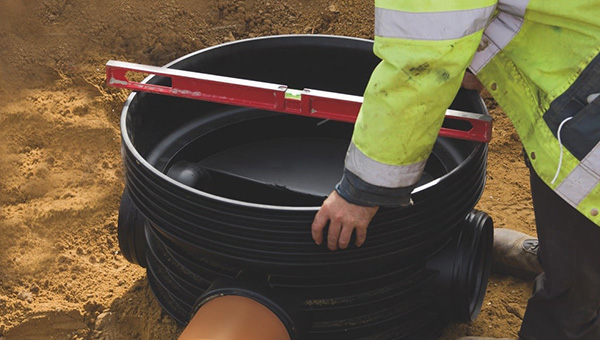There are two factors that govern how deep a chamber can be installed, these two factors are safety and usability. The depth of the chamber must comply with building regulations, which means a chamber must be installed at a depth where there is no risk to human life.
Which depth for which chamber?
Small Inspection Chambers
Small PPIC (polypropylene inspection chamber) up to 300mm diameter are generally only allowed to go to a depth of 600mm (0.6m) due to the narrow width of the chamber. These can be used in areas close to a house and near to the top of a drain.
Standard Inspection Chambers
Standard PPIC up to 450mm diameter are only allowed to go to a max depth of 1200mm (1.2m) as they are big enough for a child to fall down. These chambers will provide for good access for any rodding/cleaning that needs to take place.
Inspection chambers to go deeper than 1.2m
450mm AXEDO® inspection chambers can be used up to a depth of 3m but only if they are installed with a chamber reducing ring. This means that the opening will be restricted to a size of 350mm.
Reducing the size from 450mm down to 350mm will prevent someone from falling inside the manhole.
Although 450mm chambers can be installed at a much bigger depth than 1.5m they very rarely are, as rodding becomes much more difficult at this depth. Because of this, chambers are usually used in any modern installation as access points.






